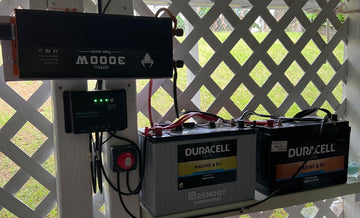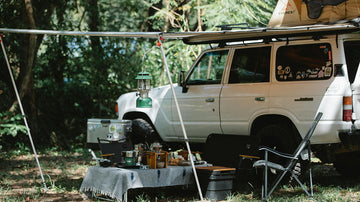In our previous article we explained what a solar charge controller is and how it works, in this guide we will take you step by step through the steps and considerations for installing a solar charge controller.
Before installing a solar charge controller, a detailed plan must be drawn up. Below is the equipment that needs to be in place before installation can begin:
Check the Solar Controller Mounting
Appearance inspection
Check the appearance of the solar controller and components, including any visible damage, cracks or deformation. Rusty or corroded connectors and plugs can cause the unit to make poor contact, preventing charging.
Electrical connections
Check that cables and connections are complete and that plugs and sockets are securely connected. Check the insulation of cables and connecting wires to avoid the risk of short circuits or leaks.
Electrical parameters
Check that the electrical parameters of the solar controller, including rated voltage, rated current and power, meet the system requirements. Ensure that the rated voltage range of the solar controller matches that of the solar array and battery bank.
Assuming that you have a solar panel rated at 24V and an inverter with a DC input voltage of 24V, this means that the solar charge controller must be rated at 24V for the system to work properly.
Material and Tools
Basic materials for installation in advance:
- Solar charge controller
- Solar panels
- Batteries
- DC loads
- Cables
- Screwdrivers
- Wire cutters/strippers
Location of the Solar Charge Controller
Choose a safe and suitable location for the controller according to your usage scenario, which will affect the efficiency of the solar system. This location should fulfil the following conditions:
- Select a well-ventilated room to ensure that the controller can dissipate heat in a timely manner to prevent overheating and energy loss.
- The installation space should not be too narrow to facilitate normal cable connection.
- To ensure the safety performance of the controller, avoid exposure to sunlight, dust, rain or humid environments.
- The temperature of the controller will rise slightly during operation. Keep away from flammable and explosive materials or gases.
- It is recommended that the controller is mounted close to the battery pack, as long cables increase line resistance and thus energy loss. A location close to the battery pack is also convenient for maintenance and monitoring, such as checking the battery status, charging conditions, etc.
The next step is to secure the solar charge controller to the chosen location with screws or other hardware, making sure there is enough space around it. Common mounting options are on a wall , or on a fixed pole.
Wiring of the Solar Charge Controller
Connecting Battery to Solar Charge Controller
Locate the terminal marked "BAT" on the solar charge controller and connect the battery to the controller with a cable. Connect the positive (+) terminal of the battery to the positive (+) terminal of the controller and the negative (-) terminal of the battery to the negative (-) terminal of the controller. Make sure the polarity is correct and the connection is secure. Use a multimeter to check that the battery voltage is within the expected range.
NOTE: The order of connection must be strictly adhered to by connecting the batteries to the solar charge controller first, changing the order may result in a short circuit or damage to the batteries. Handle with care!
In particular, our 60A MPPT Solar Charge Controller can be connected to a wide range of batteries and is compatible with 12V and 24V systems.

Connecting DC Loads to Solar Charge Controller
Check the solar charge controller's data sheet to ensure that it supports the connection of DC loads. Connect the DC load to the 'Load' port of the controller and ensure that the current of the load is less than the rated current of the solar charge controller output. Connect the positive terminal to the positive pole and the negative terminal to the negative pole.
Connecting the Solar Panel to the Controller
Ensure that the solar panel is not exposed to sunlight or cover the solar panel with an opaque material. Connect the positive (+) terminal of the solar panel to the positive (+) terminal of the battery 'Solar Power' socket and the negative (-) terminal to the negative (-) terminal.
NOTE: Photovoltaic systems can generate high voltages and care should be taken when wiring to avoid electric shock.
Post-installation checks
Check that all wiring is connected correctly and ports are tight. Ensure that everything is in order and that the system starts up safely and reliably.
Switch on Confirmation
After confirming that all the above checks have been passed, switch on the solar charge controller. The status LEDs on the controller will light up, monitor these to ensure that everything is working correctly.
Precautions for Installing The Solar Charge Controller
- In the above operation, know the local electrical code and building code requirements for solar system grounding, and all wiring must comply with the National Electrical Code ANSI/NFPA 70.
- Use a compliant grounding conductor, such as copper, to ensure a good ground connection.
- Cables can be labelled separately for polarity (positive and negative) to prevent incorrect connections.
- When the solar panel is exposed to light, DC voltage is supplied to the controller and charging begins.
- Periodically check the grounding system of your solar system to ensure that the grounding conductor is not damaged or corroded and that it is well grounded.
- If you are unsure how to properly ground your solar system, it is recommended that you consult an electrical engineer or professional installer to ensure system safety and compliance.
Parallel Solar Charge Controller
Expanding the capacity of a solar system occurs when the connected loads require more power. In this case, multiple solar controllers can be connected in parallel to the battery bank, with each controller connected to its own independent PV sub-array. In addition, the failure of one controller will not affect the solar operation of the remaining arrays.

Benefits of Parallel Solar Charge Controllers
There are many benefits to using parallel controllers in solar power systems:
Optimised system performance: Multiple solar charge controllers working simultaneously can improve charging efficiency. Increases overall charging capacity while reducing battery charging time. Useful in situations where rapid charging is required.
Flexibility: Multiple controllers connected in parallel allow the use of different sizes or brands of solar panels to suit different setups. It also supports the integration of solar arrays facing different directions to maximise energy harvesting efficiency in different conditions. Flexibility extends the capacity and performance of the solar system.
Fault tolerance and redundancy: If one controller fails, other controllers connected in parallel can continue to operate. This redundancy improves system stability and reliability, ensuring that power generation is not interrupted even if one controller fails.
Load balancing: By connecting controllers in parallel, load balancing can be achieved to ensure that all parts of the system are supplied with the appropriate amount of power, avoiding overloading or imbalance.
Simplified maintenance: Parallel controllers allow the system to be divided into independent subsystems, making troubleshooting and maintenance easier.
Tips for Parallel Solar Charge Controller
- When using parallel solar controllers, ensure that the sizing can handle the combined charge currents recommended by the manufacturer.
- Each solar controller is connected to a separate solar array and each array is configured to the specifications of the solar controller.
- Ensure that the solar charge controllers connected in parallel are the same make and model. This will ensure compatibility and efficient operation.
- All parallel charge controllers should be set to the same parameters to ensure they work together seamlessly, including voltage settings, charging algorithms and other configurations.
- Ensure that the total capacity of the parallel controllers can handle the total current and voltage of the connected solar panels and avoid inefficiencies caused by oversized controllers.
- Distribute the load evenly among the parallel controllers to ensure that their workloads are balanced and to avoid one controller overloading while others are underutilised.
- Regularly monitor the performance of each controller to ensure they are operating at their optimum. Carry out routine maintenance checks to keep the controllers in good working order.
- Install fuses or circuit breakers at the output of each controller to prevent overloads and short circuits, and to protect the controller and connected components from damage.
By following these tips, you can use your solar system safely and efficiently, and ensure the longevity of the components in your solar power system.

















